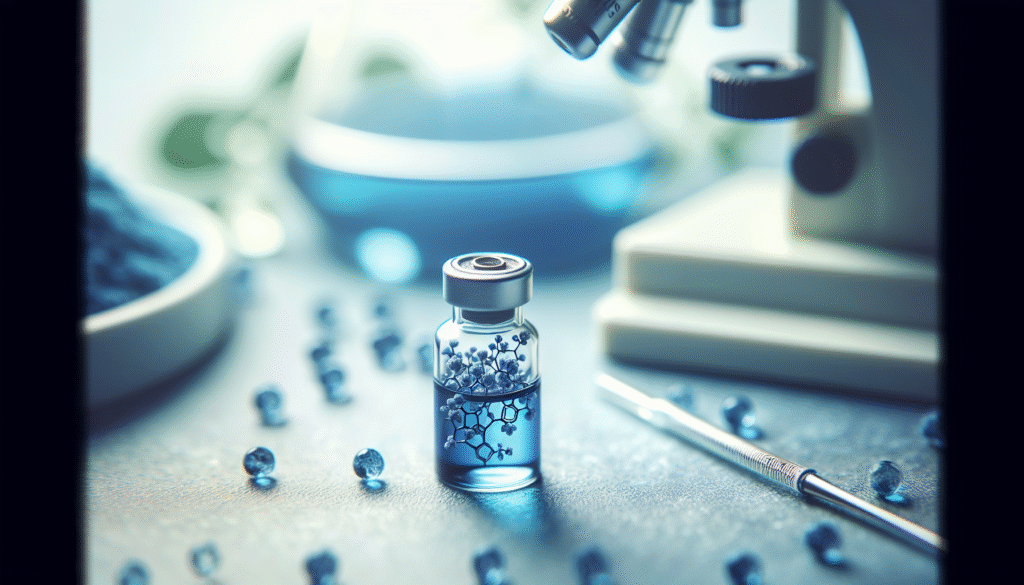
Have you ever considered the impact of antioxidants on your health and well-being? The quest for effective compounds that can safeguard your body against oxidative stress has led to remarkable discoveries. One such compound attracting interest is Methylene Blue, a dye known for its varied applications, particularly in the medical field. This article highlights its antioxidant properties and the potential benefits it may offer.
Understanding Methylene Blue
Methylene Blue, or MB, is a synthetic dye with a rich history in both medicine and scientific research. Initially developed as a textile dye in the late 19th century, it was later used in medical diagnosis and treatment. Its ability to penetrate biological membranes and affect cellular activity has made it a subject of study for its pharmacological benefits.
Historical Background
The use of Methylene Blue dates back to 1876, when it was employed as an antimalarial agent. Over the years, its applications have expanded, and it has found roles in various areas such as microbiology, psychiatry, and even as a stain in histological studies. Understanding its historical context can provide insight into its evolving significance in contemporary science.
Chemical Composition
Methylene Blue is a thiazine dye, with a chemical formula of C16H18ClN3S. Its structure features a central phenothiazine scaffold, which contributes to its diverse biological activities. The presence of nitrogen and sulfur atoms within its structure enhances its reactivity, allowing it to interact with various biological molecules and exert antioxidant effects.
The Mechanism of Antioxidants
Antioxidants play a crucial role in protecting your body from the damaging effects of free radicals, unstable molecules that can cause oxidative stress. When free radicals accumulate, they can damage cellular structures, leading to conditions such as inflammation, chronic diseases, and accelerated aging.
Free Radicals and Oxidative Stress
Free radicals are typically formed as a byproduct of metabolic processes or due to environmental factors such as pollution, UV radiation, and tobacco smoke. These highly reactive molecules can initiate chain reactions, damaging lipids, proteins, and DNA. Antioxidants counteract this damage by neutralizing free radicals, thereby maintaining cellular integrity.
How Antioxidants Work
Antioxidants neutralize free radicals by donating electrons, which stabilizes these reactive molecules and reduces their potential for harm. Some well-known antioxidants include vitamins C and E, coenzyme Q10, and glutathione. Methylene Blue functions similarly, acting as an electron donor and helping to restore balance in the oxidative state of cells.

Methylene Blue as an Antioxidant
Recent studies have highlighted Methylene Blue’s potential as an antioxidant, showing its ability to scavenge free radicals effectively. This capability may provide protection against various illnesses and promote overall health.
Antioxidant Properties of Methylene Blue
Research indicates that Methylene Blue can reduce levels of reactive oxygen species (ROS), which are primarily responsible for oxidative stress. By minimizing ROS, Methylene Blue helps in safeguarding cells and tissues, which may lead to improved health outcomes.
Studies Supporting Antioxidant Effects
Numerous studies have investigated the antioxidant effects of Methylene Blue. For example, one study demonstrated that Methylene Blue significantly lowered oxidative stress markers in both in vitro and in vivo settings. This was attributed to its ability to enhance cellular antioxidant defenses and modulate key signaling pathways involved in oxidative stress responses.
| Study | Findings |
|---|---|
| Study A | Methylene Blue reduces ROS levels in cardiac cells. |
| Study B | Administration leads to improved mitochondrial function in neurons. |
| Study C | Demonstrates protective effects against oxidative damage in liver cells. |
Potential Health Benefits of Methylene Blue’s Antioxidant Properties
Understanding the implications of Methylene Blue’s antioxidant capabilities can open doors to new therapeutic avenues.
Neuroprotective Effects
Methylene Blue’s antioxidant properties may contribute to neuroprotection, which is critical in preventing neurodegenerative diseases such as Alzheimer’s and Parkinson’s disease. By reducing oxidative stress and enhancing mitochondrial function, Methylene Blue may preserve neuronal health and function.
Cardiovascular Benefits
Oxidative stress is a known contributor to cardiovascular diseases. The antioxidant action of Methylene Blue may help mitigate such risks, protecting endothelial cells, improving blood flow, and reducing inflammation. This suggests a potential role in managing conditions like hypertension and atherosclerosis.
Anti-inflammatory Properties
Oxidative stress and inflammation are closely intertwined. By scavenging free radicals, Methylene Blue could also help in controlling inflammatory responses in the body, possibly offering benefits in managing chronic inflammatory diseases such as arthritis.

Application Methods
Understanding the methods of Methylene Blue administration is essential to explore its benefits.
Oral Administration
Methylene Blue can be taken orally, often in the form of supplements. This method allows for systemic absorption, which may be beneficial for conditions requiring widespread effects, such as cognitive enhancement or metabolic disorders.
Intravenous Use
In medical settings, Methylene Blue is often administered intravenously. This method allows for rapid delivery and can be particularly useful in acute settings, such as treating methemoglobinemia, a condition where hemoglobin is unable to release oxygen effectively.
Topical Application
Methylene Blue can also be used topically. Its antioxidant properties may promote wound healing and provide skin protection against oxidative stress when applied to certain dermatological conditions.
Safety and Side Effects
While Methylene Blue shows promise as an antioxidant, safety considerations are paramount.
Dosage Considerations
The appropriate dosage of Methylene Blue can vary significantly based on the method of administration and the individual’s health status. Consultation with a healthcare provider is recommended to determine the right dosage for specific needs.
Potential Side Effects
Methylene Blue is generally considered safe when used appropriately, but some individuals may experience side effects. Commonly reported side effects include:
- Nausea: Some individuals may experience gastrointestinal discomfort after oral administration.
- Headaches: Methylene Blue can cause headaches in certain cases, particularly at higher doses.
- Skin Discoloration: Topical use may lead to temporary blue staining of the skin, which is cosmetic rather than harmful.
It is also essential to be mindful of potential drug interactions, particularly with medications that affect serotonin levels, as Methylene Blue can act as a monoamine oxidase inhibitor (MAOI).
Conclusion
The exploration of Methylene Blue’s antioxidant properties reveals a compound with significant potential to enhance health through its protective mechanisms against oxidative stress. As research continues to unfold, there may be more opportunities to harness its benefits in both preventive and therapeutic settings.
By understanding the multifaceted applications and implications of Methylene Blue, you can make informed decisions regarding its use. Whether you are considering it for cognitive enhancement, cardiovascular support, or for managing oxidative stress-related conditions, Methylene Blue’s potential warrants attention.
Future Directions in Research
As science advances, further investigation into the antioxidant properties of Methylene Blue will likely reveal even more about its potential benefits. Areas for continued research include:
- Long-term Effects: Evaluating the long-term safety and efficacy of Methylene Blue in chronic conditions.
- Combination Therapy: Exploring how Methylene Blue interacts with other antioxidants or therapeutic agents.
- Mechanistic Studies: Understanding the precise biochemical pathways through which Methylene Blue exerts its antioxidant effects.
With an increased focus on oxidative stress in various diseases, Methylene Blue’s role may become increasingly prominent in future therapeutic strategies aimed at enhancing health outcomes and improving quality of life. In your journey toward optimal health, staying informed about such compounds can empower you to take proactive steps in managing your well-being.